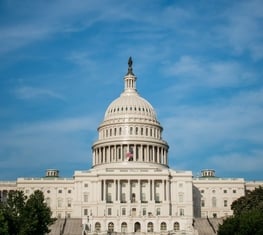This article originally appeared in the New York Times.
By Thomas Fuller and Michael Wines
SAN FRANCISCO — When Wisconsin Republicans last redrew the State Legislature’s district boundaries, in 2011, they set off a multimillion-dollar legal battle over accusations of gerrymandering that this week was granted a potentially historic hearing by the Supreme Court.
Then there is California, which redrew its state legislative and congressional districts the same year with far less rancor.
California is the largest of a handful of states that are trying to minimize the partisanship in the almost invariably political act of drawing district lines. California has handed that task to the independent and politically balanced California Citizens Redistricting Commission, and Arizona has a somewhat similar commission. Florida has amended its Constitution to forbid partisanship in drawing new districts. Iowa has offloaded the job to the nonpartisan state agency that drafts bills and performs other services for legislators.
The trend has gained momentum in states like Oregon and Ohio, where voters have approved a new commission for redistricting for state seats — but not those in the House of Representatives — in 2021.
Still, on the whole, taking the politics out of map drawing is itself an act of political courage that many politicians, particularly those who benefit from district lines drawn to help their party, are unwilling to stomach.
Skeptics say that even nominally nonpartisan commissions can succumb to political calculation. “An independent redistricting commission is only as independent as those who appoint it,” said Pamela Goodman, the president of the League of Women Voters of Florida.But others say that if a populous and politically byzantine state like California can make an independent commission work, wringing partisanship and gerrymanders out of politics can be done anywhere.
Stan Forbes, an almond farmer and the owner of a bookshop in California’s agricultural heartland, is the chairman of the 14-member independent organization that draws the boundaries for the state’s political districts.
“I don’t know if the political forces like us that much — they may curse us in their prayers at night,” he said. “But we have the best system if you want a nonpoliticized, nongerrymandered, public interest process.”
California’s commission was established in 2008 by a ballot initiative. It is made up of five Democrats, five Republicans and four members not affiliated with either party. Among the commission members are a lawyer, the owner of an insurance business, an engineer, a former director of the United States Census Bureau, professors and urban planners.
In 2011, the commission redrew what Mr. Forbes called “egregious” cases of gerrymandering, including one district that had grouped Democratic voters by stretching down the Pacific Coast and then inland 100 miles to Davis, a Democratic stronghold. The redrawn legislative boundaries followed the principle that “communities of interest” should not be broken up wherever possible. In some cases that meant not mixing urban residents with rural ones or uplanders with valley dwellers; it also meant grouping residents near Long Beach worried about pollution.
Michael Li, an expert on redistricting at the Brennan Center for Justice at the New York University School of Law, said that was as it should be. “If you take a look at the legislative districts as a whole,” he said, “you should say, ‘Gosh, that looks like the state’ — not just Republicans and Democrats but the geography, the grouping of minorities. That’s what the framers wanted.”
What nonpartisan redistricting did not do, at least in California, was dent the majority party’s control of state and congressional offices. In California, where Democrats dominate, redistricting created a half-dozen newly competitive House seats, Mr. Forbes said. But Democrats actually picked up four seats and have held on to them since — a windfall that some attribute to the party’s skillful, if deceptive, gaming of the new rules.
Election law experts have been particularly critical of recent gerrymanders in Republican-controlled states like North Carolina, Wisconsin and Pennsylvania, but a lawsuit has also been filed against Maryland, where Democrats are in control.
The Constitution gives state legislatures the power to set “the times, places and manner” of federal elections, and legislators generally have been loath to cede it. A number of legislatures delegate the map drawing to commissions handpicked by the political elite, thus keeping the task political. One of them, in Pennsylvania, was accused in a state lawsuit this week of drawing one of the most gerrymandered House maps in the nation.
In states that have seriously sought to curb partisanship, it is usually voters who have pried control of political boundaries from the grip of unwilling legislators. Arizona’s bipartisan Independent Redistricting Commission sprang from a 2000 ballot initiative fiercely resisted by the state’s Republican Legislature. California voters passed Proposition 11, creating an independent commission, in 2008, four years after incumbents — mostly Democrats — swept every state legislative and congressional election. Democratic political leaders spent $7 million in a vain effort to defeat the measure.
And in Florida, after voters initiated and then approved constitutional amendments in 2010 mandating nonpartisan political maps, a largely Republican-led coalition filed suit to try to block the measures. The state’s Republican-controlled Legislature drew new congressional boundaries that were immediately challenged in court as illegally partisan. New nonpartisan legislative and congressional maps were drawn in 2015.
The Supreme Court ruled in 2015 that independent commissions like Arizona’s passed constitutional muster, but other states have not followed suit. Both Democratic and Republican legislatures, from Delaware to Wisconsin to Virginia, have scuttled proposals to make map drawing less prone to political manipulation.
In states that have taken the plunge, though, supporters insist that the new regimens have improved the political process.
While Florida’s redistricting path has been tortuous, the amendments were “the right thing to do at this time,” said Ms. Goodman, of the Florida League of Women Voters, which campaigned for them.
“The intent was to create independent districts,” she said, “and in the course of that to attract more candidates and a higher level of discourse in the election.”
Florida is a battleground state in national elections, but Republicans rule the regional and local races. That remains true: In 2016, the first election year under redrawn maps, Democrats gained but one of 27 House seats and a mere four of 160 state legislative seats.
Some analysts have said that less partisan redistricting would loosen the Republican Party’s grip on the House of Representatives and state legislatures. To others, however, Florida is evidence that geography and demographics — the so-called Big Sort — are the main sources of political imbalance, not gerrymandering.
Three Emory University political scientists made that case in a much-cited 2006 study. “This is not to defend partisan gerrymandering, or to say that it has no effect,” said one of them, Alan I. Abramowitz. “It’s certainly possible for parties to draw lines that give them an advantage. But it doesn’t tend to give them more safe seats.”
But if the impact of partisan gerrymandering is disputed, few doubt that the naked political calculations common in many states can be improved. In California, boundaries are drawn in open meetings, not behind closed doors, and are explained in a handbook. And the line drawers are not politicians but citizens who must write four essays, ace a 90-minute interview and clear a gantlet of background checks and ethics prohibitions to be considered for a seat.
The result, Mr. Forbes said, is that “there aren’t any crazy districts that grab a population that makes no sense.”




